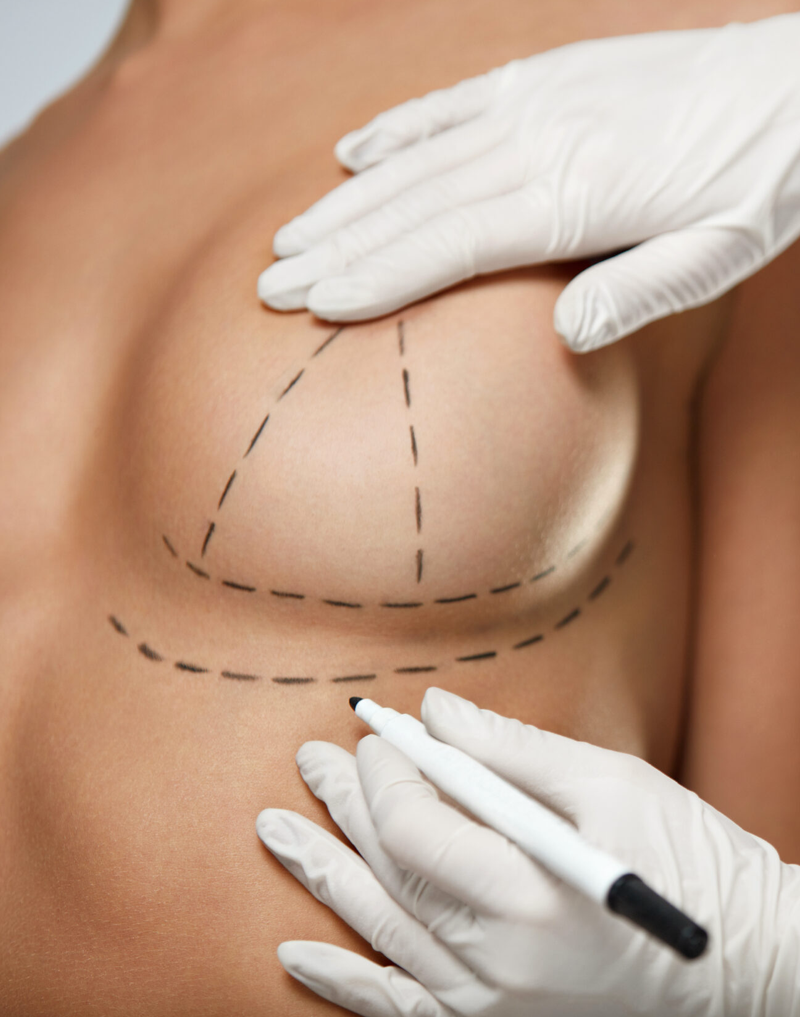This medical procedure is mainly performed on those with small or asymmetrical breasts. This operation may only be performed when the development of the breast tissue is complete and the patient is an adult. This procedure is generally aimed for the patients who faced with mastectomy due to breast sagging, atrophy or surgical breast disease, in order to give asymmetrical breasts a symmetrical shape.
To visually recognizable breast enlargement or breast implants are surgically inserted into the breast tissue or they can also be placed under the pectoral muscle. If the skin condition is not suitable for covering the inserted implants, the patient's own tissue can be used.
During planning of the surgical incision, the patient and the surgeon make decisions together. The incision along the crease of the lower breast is considered the most common incision technique in plastic surgery. Patients who are interested in breast augmentation must keep in mind that unrealistic expectations, incorrectly placed breast implants or complications in the post-operative healing process can cause serious problems.
Breast augmentation is a surgical procedure used for aesthetic and functional purposes for breast tissue that is structurally small due to pregnancy or has shrunk after birth due to so-called atrophy. If, in addition to breast sagging, the patient also has breast reduction, the breast lift (mastopexy) is performed together with the breast augmentation.
The material, which is used for breast tissue augmentation, is silicone gel-like protheses with high bonding strength. In particular, polyurethane-coated silicones are used because of their high quality and the lowest risk of hardening of the breast and they give patients a round and natural shape of the female breast. These silicones are mainly/ for example preferred and used in Can Health Group hospitals. These prostheses are characterised by their special nature, even if the outer shell is torn, the gel silicone does not disintegrate and continues to retain its original shape. When inserting the prosthesis into the breast tissue, the incision site may vary according to the patient's and doctor's wishes and the type of prosthesis to be used.
The prosthesis is inserted/applied with an incision of 4-5 cm. The prosthesis can be placed directly under the breast tissue or under the chest wall muscle. Despite the possible pain in the early postoperative period of submuscular placement, the incision under the chest wall muscle is particularly preferred due to the fewer side effects and the natural appearance. (Although submuscular placement may cause some pain in the early postoperative period, it is preferred because it has fewer other side effects and offers a more natural appearance). The surgery takes about 1.5-2 hours and is performed under general anaesthesia. The patient can return to normal life in a few days. Patients usually have to wear special bras for a short period of time. Patients are advised to limit their movements, such as not lifting heavy weights or avoiding overhead movements with arms upwards for 3 weeks. Only after the 6th week the patients can do all kinds of sports activities.
As a complication, capsular fibrosis can develop in 1-2 % of cases. In such a case, the hard capsule is removed in a second operation and the same prostheses are inserted again. The life-threatening complications are not expected.
